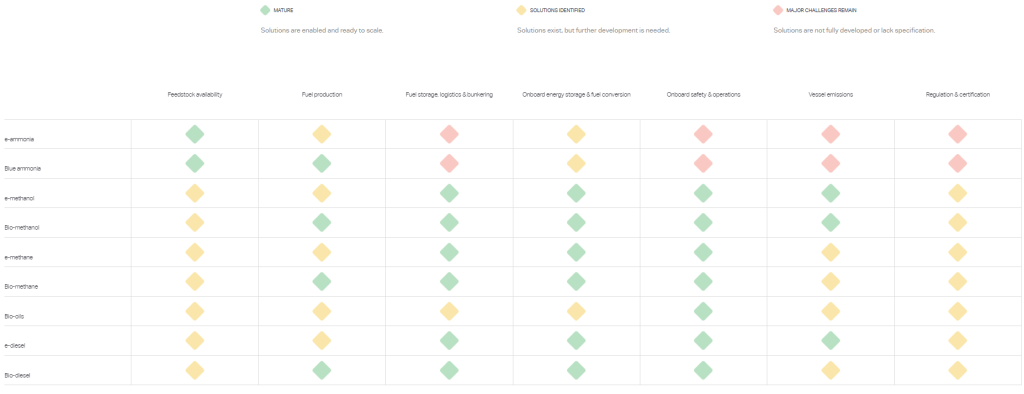The Mærsk Mc-Kinney Møller Center for Zero Carbon Shipping (MMMCZCS) has issued an updated version of its Fuel Pathway Maturity Map, providing an overview of the advancements and challenges in sustainable fuel pathways.
The Map provides an overview of key alternative fuels that are expected to play a pivotal role in decarbonizing the maritime industry by 2050. The update highlights the progress made since 2022 and presents an independent assessment of the readiness of key parameters across various alternative fuel pathways. Furthermore, the Map illustrates the current status of these fuels and their potential contribution to achieving decarbonization goals.
This update counters the prevailing narrative that maritime decarbonization is at a halt. The progress captured in the Fuel Pathway Maturity Map demonstrates that the technical side of the industry is on the right path, with tangible advancements in key areas.
… explained Christoffer Lythcke-Elberling, Head of Transition Modeling & Analytics.

Key Developments (2022–2024)
The past two years have seen significant advances, driven by increased investment in dual-fuel vessels and pilot projects across the fuel landscape. Notable progress includes:
- Ammonia: Pilot projects have advanced onboard energy storage and fuel conversion technology, bringing ammonia closer to maritime readiness.
- Methanol: Rapid growth in the dual-fuel methanol vessels coming into the market has driven advancements in global storage, logistics, bunkering infrastructure, and bio-methanol production using bio-methane as a feedstock.
- Bio-methane: Biogas-based production technologies are maturing, with large-scale plants now operational.
- Bio-oils: Pyrolysis oil production technology has improved, though further work is needed to achieve commercial viability for shipping.
- Renewable Diesels (New Pathways): E-diesel and bio-diesel have been introduced as additional viable options, reflecting the expanding landscape of sustainable maritime fuels.
Driving the Green Transition Forward
While technological strides have been made, the Fuel Pathway Maturity Map underscores the urgent need for continued innovation and regulatory alignment. The maritime sector cannot achieve decarbonization without clear certification standards, robust emission controls, and global regulatory consensus.
With the technological advancements outlining the path forward, regulators have a crucial opportunity to take bold steps. The tools and knowledge are in place for regulatory frameworks that will accelerate the transition—now is the time to act,
… said Torben Nørgaard, Chief Technology Officer – Energy & Fuels.
Access the live map here.





























































